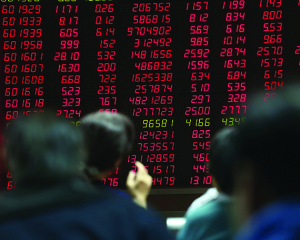 This week the Chinese stock market saw its largest one-day fall since 2007 – a drop of 8.5%. New economic figures revealed the country’s industrial profits fell by 0.3% in June and the government, which has been helping to prop up the equities market since the start of July, may now not continue its support.
This week the Chinese stock market saw its largest one-day fall since 2007 – a drop of 8.5%. New economic figures revealed the country’s industrial profits fell by 0.3% in June and the government, which has been helping to prop up the equities market since the start of July, may now not continue its support.
This has spurred concerns that a Chinese crash could be the next “economic event” to hit the global markets.
Here, Savvas Savouri, chief economist at Toscafund, argues that there is little cause for concern for China, Europe or the property market.
We are being told in shrill tones that China’s economic growth is poised to stall. Some claim it has already done so – a shock we are warned will plague us all.
Those fearful of global fallout point to China’s many “ghost towns” as testament to the fact that its impressive growth of recent years is little more than an unsustainable fiction.
If the decline in China’s equity market were not enough to panic bulls and excite bears, they have both been confronted by falling commodity prices as further proof of a broken system.
Whenever I am asked to defend my positive view of China in the face of Beijing’s market manipulation, I reply that we should reflect on how we in the so-called advanced economies have intervened in capital markets, from banning the short-selling of equities to quantitative easing in debt markets.
Furthermore, when confronted with concerns over China’s demographic outlook I reply that I am a great deal more concerned with birth rates in Japan, India and most of Europe.
But the best defence of China is to make a direct comparison of its ghost towns with what is now a flourishing Docklands.
It is true that the foray of Docklands developer Olympia & York into the east of London ended in failure – entering bankruptcy in 1992 – but I would argue that two factors contributed to this.
One of these problems is not one facing the People’s Bank of China and the other is easily remedied by Beijing authorities’ responsibility to fiscally manage China’s economy.
First, the UK was not in command of its monetary management for a number of years. It was only freed from its German shackles by the pound’s shock exit from the Exchange Rate Mechanism on White Wednesday, 16 September 1992. This, of course, came too late to save O&Y’s investment, or that of the banks whose capital helped fund it.
Secondly, Canary Wharf’s initial occupational woes were made worse because the development went ahead in the wrong commercial sequence. Transport links came last – the Jubilee Line extension first proposed many years earlier only opened in 1999.
One could make a similar argument for Edinburgh Park, which having opened in 1995 had to wait eight years for a proper rail link to realise its occupational and wider economic potential.
The plain fact is that, just as the UK had to do with Canary Wharf and Edinburgh Park, so China needs to significantly improve the transport infrastructure to its ghost towns to bring them to economic life.
And I have every confidence that Beijing will fund this construction by using its vast foreign currency reserves. In fact, this development activity will provide a great deal of work.
It is true that, in the meantime, investors across China who borrowed heavily are suffering financial pain. However, while the UK could not cut interest rates until it left the ERM, China has no such shackles. Beijing has been and can continue to ease the lending environment. Far from 2015 proving a poor year for China’s visible trade surplus, it is proving the best year yet.
Much like the UK experience in the early 1990s, those buying property assets from distressed sellers will get their hands on real estate where the intrinsic value is far greater than market value. We might even see buyers get hold of their original developments again, just as Reichmann did in 1995 with Canary Wharf.
It would be naive to claim all the new industrial, office and residential real estate we have seen developed across China has an economically valuable future.
This accepted, I consider it no less naive to ignore the lessons from the UK’s own past. Just think of the present price tag on 1 Canada Square, E14, against what it cost Paul Reichmann to build in 1988 and the price he paid to buy it back in 1995.
Read a full report from Toscafund >>











